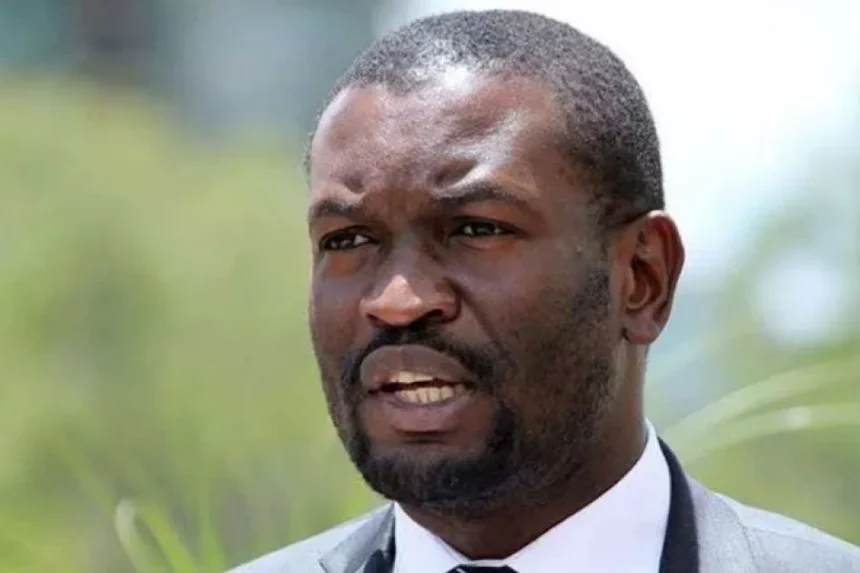Nairobi Senator Edwin Sifuna has dismissed Kenya’s recent agreement with the Unites States’ Millennium Change Corporation (MCC) to finance the acquisition of electric buses for Line 2 of Nairobi’s Bus Rapid Transit system.
In his ongoing tour of the United States, President William Ruto met MCC CEO Alice Albright in New York on Tuesday for the signing of the Ksh.8.7 billion ($60 million) deal.
He said the Kenya Urban Mobility and Growth Threshold Program will help Kenya deal with traffic congestion within the Nairobi metropolitan area.
But while the move has been welcomed by some leaders as a step in reigniting the stalled Bus Rapid Transit (BRT) Project, critics have labelled it impractical.
Sifuna, who spoke on Citizen TV’s Day Break program on Thursday, said Nairobi’s traffic congestion issue is not because of the cost of fuel, thus, the government should not tout the transition to electric buses on the argument of cost-effectiveness.
“The problem of congestion has never been the fuel. The price of diesel has increased and even if you move to electricity, the price of power has increased 63 per cent with the new government,” said Sifuna.
He said in the backdrop of tough economic times, the uptake of electric motorbikes by boda boda riders, has been dismal because of the overall cost implications involved.
“Khalwale has tried to mobilise boda boda operators to switch to electric motorcycles, but they were not interested,” Sifuna said in response to Kakamega Senator Boni Khalwale, who had argued that the BRT system and electric mobility is the solution to congestion.
“Until we do a rapid transport system of these two cities, we will continue to lose money. That is the way to go. It responds to very serious wastage of resources through traffic jams,” Khalwale said.
But in Sifuna’s view, Kenya needs to expand its infrastructure first in order to accommodate the BRT buses in major cities.
“We first need to sort infrastructure. To which roads are you bringing these electric buses? Successful cities like Dar es Salaam have built separate roads for the BRT system, not annexing a lane of an existing highway like us,” the senator said.
“Businesspeople have invested in buses and taken loans and now you want to bring in competition in electric buses, that is not helping the people of Nairobi.”
THRESHOLD PROGRAM
During Tuesday’s signing event with MCC, President Ruto said he is also working on a rail system around Nairobi to ease congestion.
“Mobility in Nairobi is very important to us. The city has 5 million people during the day and 4 million at night, so this means there are 1 million people who come every day, posing a very significant challenge to the infrastructure. The bus transport system is a very important component,” Ruto said.
According to MCC, the threshold program seeks to assist Kenya in addressing limited connectivity in urban areas, a critical constraint to inclusive economic growth.
“Analysis, conducted jointly by MCC and the Government of Kenya, revealed that Kenya’s urban areas—particularly in the capital city, Nairobi—did not enjoy the significant productivity gains frequently associated with urbanization,” MCC said in a statement seen by Citizen Digital.
“Limited planning and a lack of prioritization in investments related to land use and transportation undermine connectivity and lead to fragmentation, limiting productivity among manufacturing firms in Nairobi and between workers and economic opportunities.”
The program comprises four projects; the Integrated Transport Planning Project, the First and Last Mile Connections Project, the Detailed Land Use Project, and the Blended Finance for Bus Rapid Transit (BRT) Project.
STALLED BRT SYSTEM
In late July, Roads and Transport Cabinet Secretary Kipchumba Murkomen said the government was set to resume construction of the BRT project in two months.
Murkomen said his ministry was in talks with the Treasury to acquire funds for the completion of the project by December next year.
“We are working with the National Treasury to ensure prompt settlement of pending bills owed to the contractor to enable him to resume work within the next two months with a target of December 2024 as the completion date,” he said on July 26 after inspecting the Line 2 BRT corridor at Kasarani terminal in Nairobi.
The Nairobi Metropolitan Area Transport Authority (NAMATA) had in 2022 projected to launch five BRT corridors but the project stalled due to delay in disbursements.
NAMATA Director General Francis Gitau, in a past interview, said the Treasury failed to release the Ksh.3 billion needed to complete the Ksh.5.6 billion project which was scheduled to begin operations in June 2022.



